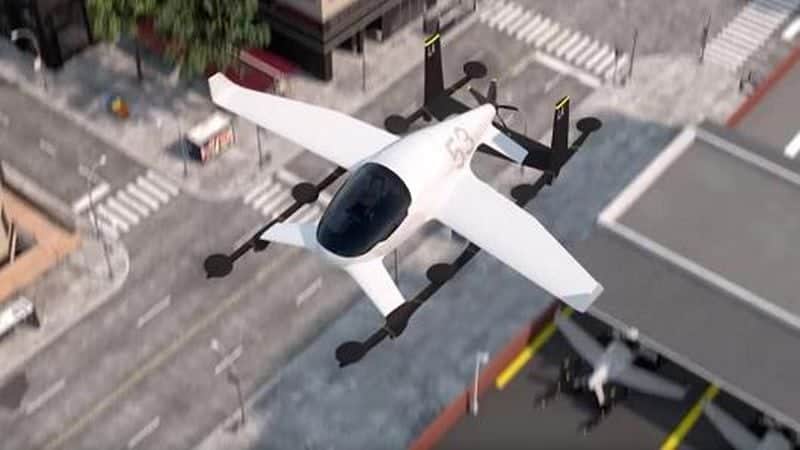A few years from now, the ride you booked on Uber may come flying down to you. Out of the many futuristic transport concepts, the flying taxi will soon be a reality. You will soon say good bye to traffic jams and you’d enjoy a fantastic drone ride in the sky. Do you remember all those sci-fi movies; where you envied all those who were zipping around in flying cars? Now Uber is planning to do the same, i.e. have flying taxis that would soar over cities. Uber’s flying taxi project is an ambitious project, which would be harder than anything the company has attempted previously. The company will open a lab in Paris dedicated to the ‘Elevate’ program. Let’s take a closer look at this amazing project:
Uber’s flying taxi project will change the future of hired transport
Uber is reportedly going to spend 20 million Euros on its flying taxi project. The flying taxi development and research center France will be known as the Advanced Technologies Center Paris or ATCP. The company estimates it will take about 5 years to develop the required AI algorithms, air traffic controls and other technical aspects for its unique flying taxi Uber. This project is the start of a new era of flying cars.
Uber’s flying taxi project will recruit AI experts, engineers, computer vision scientists and so on. In a press release, the company revealed that the initial stages of the flying taxi Uber project would include machine learning or AI based transport demand models, high density with low altitude air traffic managing simulations.
It would also research on the integration of innovative solutions for airspace transport with aviation regulators such as the EASA. Another key field of development would be developing smart grids to support the electric power based future fleets (taxis), both in air and in the ground.
Why choose France to set up its lab?
Due to support from President Emmanuel Macron, France is quickly becoming the hub for machine learning or AI research hub. Not only Uber, but Google also is developing a machine learning team in France.
Facebook already has its AI team in France; but is planning to double its strength. This is because France produces a large number of graduates who are experts in AI. The country is planning to create an educational program, which would increase the number of AI graduates even more.
Uber decision therefore to set up its flying taxi development and research center France as there would be no dearth of researchers and scientists who are well versed in AI.
What are the challenges?
Recruiting
Though it does sound easy, Uber’s flying taxi project may face some initial difficulties in recruiting. It’s executives are facing some legal action which led to its UberPop in the year 2015. The company has also been plagued by sexual harassment as well as passenger safety issues which may deter AI scientists from working in the company.
Never been done before
The biggest issue, apart from recruiting, is that flying cars have never been attempted before. It’s not that no one had the idea before, but because the tech, logistics, costs and regulations present a massive challenge.
Elon Musk famously put it last year that if an owner did not maintain the flying car, hubcaps etc could rain down from the sky and cause dreadful fatalities. This means, that Uber has to be extremely careful about maintaining its flying fleet.
Regulations
Uber’s flying taxi project will also have to take into consideration the airspace rules and regulations. The flying taxis would not fall under the airplane category, nor can they be classified as drones. This would make it tricky to work out the exact regulations for the flying taxis planned by Uber.
In France, drones which have commercial permits have to have operators who are well trained in flying drones. As Uber is planning to fly people, its controllers would also need similar accreditations. Another agency that Uber has to work with is the EASA, to get the required drone flying permits in European airspace.
Uber is working with the US space agency NASA too. The NASA-Uber partnership will be useful for the company to plan and execute the necessary safety standards. This partnership will also explore technologies and concepts that are related to UAM (urban air mobility) in cities.
Other innovative public flying concepts
VTOL and IIT Kanpur venture
VTOL Aviation India Pvt Ltd and IIT Kanpur have signed a $2.2 million deal to develop an autonomous vertical takeoff and landing aircraft. This craft could also be used as flying cabs. There would be more than 100 IIT students working on the project, which might take up to 5 years to complete.
The proposed VTOL aircraft would most probably use ducted fan, similar to commercial aeroplanes. The craft would be powered by electric power, so would be a clean and green, alternative air transport. It will also help to solve the traffic congestion problem too, as it is planned to be flexible enough to land and take off from any kind of terrain.
Vahana
 Image Source : image.redbull.com
Image Source : image.redbull.com
Airbus, the European manufacturer has tested its electric flying vehicle called Vahana this year in Oregon. The name Vahana, meaning vehicle is derived from the Sanskrit language. Vahana has been designed to carry only one passenger, and it managed to climb to 5 meters in 53 seconds. Like other such flying crafts, the Vahana too is powered by electricity.
Cora
Image Source : steemitimages.com
Cora is the name of the new air taxi service backed by Larry Page’s (Google cofounder) Kitty Hawk Company. It is an autonomous craft meant to ferry two passengers through the air. The electrical craft can take off in the same way as a helicopter, and flies with human supervision.
Cora has 11 unique independent lift fans, which help the craft in vertical takeoff. Its wingspan is 36 ft, can fly at 500-3000ft and fly up to 110 miles per hour. It can fly to a distance of approximately 62 miles. Passenger drones or air taxis are going to be a reality soon.
They won’t be cheap, but they would provide a faster, cleaner fuelled passenger ferrying service. There would be a lot of demand for them, as they would help to beat on road traffic and get to destinations faster, apart from the novelty factor. Uber’s flying taxi project, flying cars and others like it would design a new airspace in the future, something straight out of science fiction.









